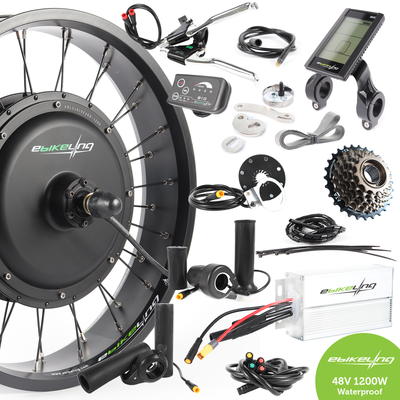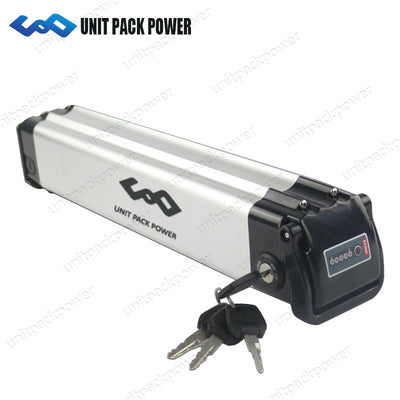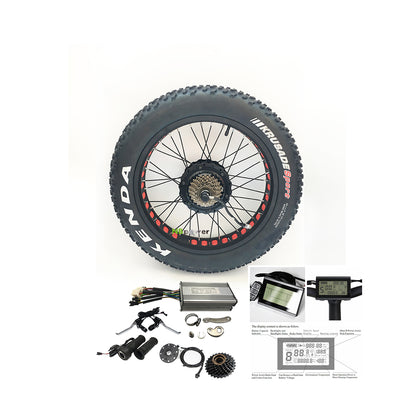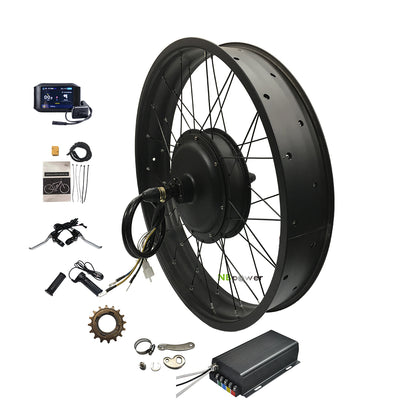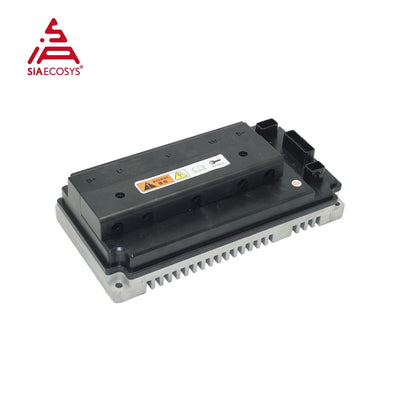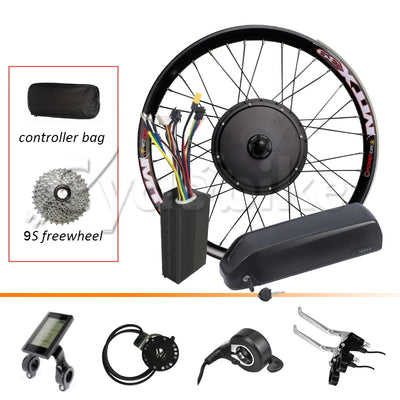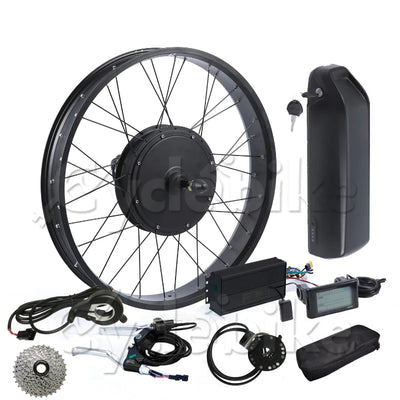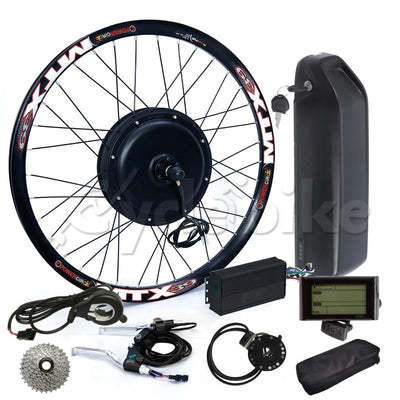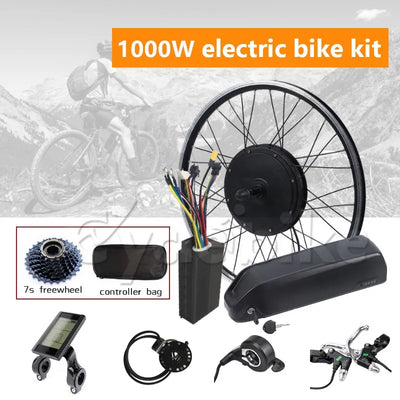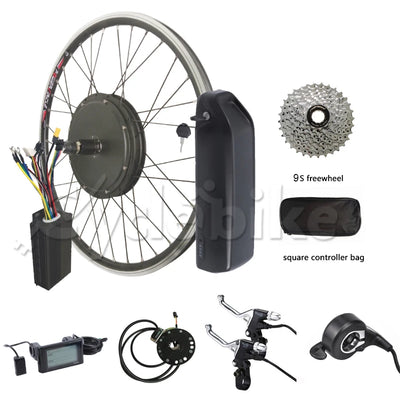Electric Bike Battery Basics: What are these Volts & Amp Hours?
Posted by Tom Lee on
Alright! You are getting excited about the electric bike scene and you start looking around at some e-bikes, but what do volts, amp hours, watt hours mean? Well I aim to answer some of these questions for you here!
The terminology for electric bike batteries can seem a little foreign at first but I think the following will relate it to some typical car terms that may make more sense.
Volts (V) = HorsePower!
Volts = Horsepower!
That is a pretty simplistic way of putting it but it is the closest analogy to a car. Electric bike batteries typically come in 24V, 36V, 48V, and 72V batteries. More volts = more POWER
Here is another analogy: electricity is water. If it is water flowing through the wires (tubes), then higher voltage means that the water (energy) moves faster, and through a smaller tube.
The typical battery is 36V on most e-bikes with some at 24V and some at 48V. The electric bike manufacturers spec these because they provide a good power to cost ratio.
When you get up into the 72V range you are looking at a custom built electric bike because a 72V battery will generally make a bike that is powerful and may not be classified as a traditional bicycle. 72V batteries are significantly more expensive too.
Here is another thing to consider when building or using a high power electric bike; being SHOCKED! Human skin can insulate you from shock up to something in the area of 40 – 45 volts. 72 volts is a shock hazard, and in some places that is a regulatory issue. It is always a safety concern.
If the power output (watts) or the max speed of an electric bike goes above the allowable (250 Watts, 25 km/h in Europe / 750 Watts, 20 mph in US) then the e-bike will be classified as a moped which generally requires registration, insurance, license plate, etc.
A little background on controllers…..
Ultimately the electronic controller of an e-bike limits the maximum power output and the maximum speed of the bike. If you buy a stock electric bike in your country, you will most likely be buying an electric bike that complies to the max power and speed limits to be classified as a bicycle (this is not always true though!).
If you are building your own custom electric bike you will want to be aware of what controller you are buying if you want it to still be classified as a bicycle. It is possible to create an electric bike that is too powerful or too fast with a lower voltage battery if you have a controller that allows it. Just something to be aware of if you are building your own electric bike.
Amp Hours (ah) = The Gas Tank!
Yup, it’s generally that simple. The more amp hours you have, the more range you will get with your electric bike.
Now one thing to be aware of is that every manufacturer will claim that their bike has incredible range You may see an e-bike with 36V 10ah battery that gets 25 miles and then another with the exact same battery that gets 50 miles of range. “Your mileage may vary” is the car terminology for average miles per gallon, but I think that crosses over to e-bikes range claims!
There are a lot of factors that affect the range of the electric bike, such as:
What power assist setting you are using? Most power assist bikes have 4 assist levels. Some e-bikes just have a throttle that you can vary the assist with. This is pretty common sense, but the more assist you use the less range you will have.
Are you climbing a lot of hills? Range goes down.
Are you riding into a lot of headwinds? Range goes down.
Are you carrying heavy cargo on your bike? Range does down.
Some bikes may have a very inefficient motor (lost energy in the motor due to friction, etc.) that causes decreased range, but these days most electric bike motors are fairly efficient (there is room for improvement!)
What is the condition of your bike? A well adjusted bike goes farther i.e. well lubricated chain, proper tire pressure, etc.
What is your tire pressure? Lower pressures = less range. There is a nice balance between too high a pressure (not comfortable) and too low a pressure (not efficient). 50-60 psi is a good pressure range for street riding.
Are you pedaling at the right times? Pedaling at critical moments (when accelerating or climbing), you will go farther.
Pedal more => More range and better health
If you are concerned with range I recommend going with a large capacity battery pack. Some electric bike manufacturers have use a standard 10 ah pack with an option to upgrade to say a 15 ah pack.
Watt Hours?
I am afraid I don’t have an car terminology equivalent for this one.
Basically it is the the combination of the volts and amp hours to give you the total energy in the battery pack. You may see this in the specifications for an electric bicycle but it is not as common as the volts and amp hours specs.
Volts x Amp-hours = the amount of energy in the battery, or watt hours (WH). It is a way to compare batteries of diffeerent voltages or AH ratings.
For example:
Bike #1 has a 24 Volts and a 20 AH battery = 480 watt hours.
Bike #2 has 48 Volts and a 10 AH battery = 480 watt hours.
Both bikes have similar energy on board. And if they have roughly equal motors and riders, they will probably perform in a very similar fashion. The higher voltage bike may accelerate faster and climb better – at the expense of some of that energy.
Another bike has 24 Volts and a 6 AH battery = 144 watt hours. That bike is not going to go nearly as far as the other two.
That’s it for now. Stay tuned for more e-bike basics.
-Pete
P.S. Don’t forget to join the Electric Bike Report community for updates from the electric bike world, plus ebike riding and maintenance tips!

